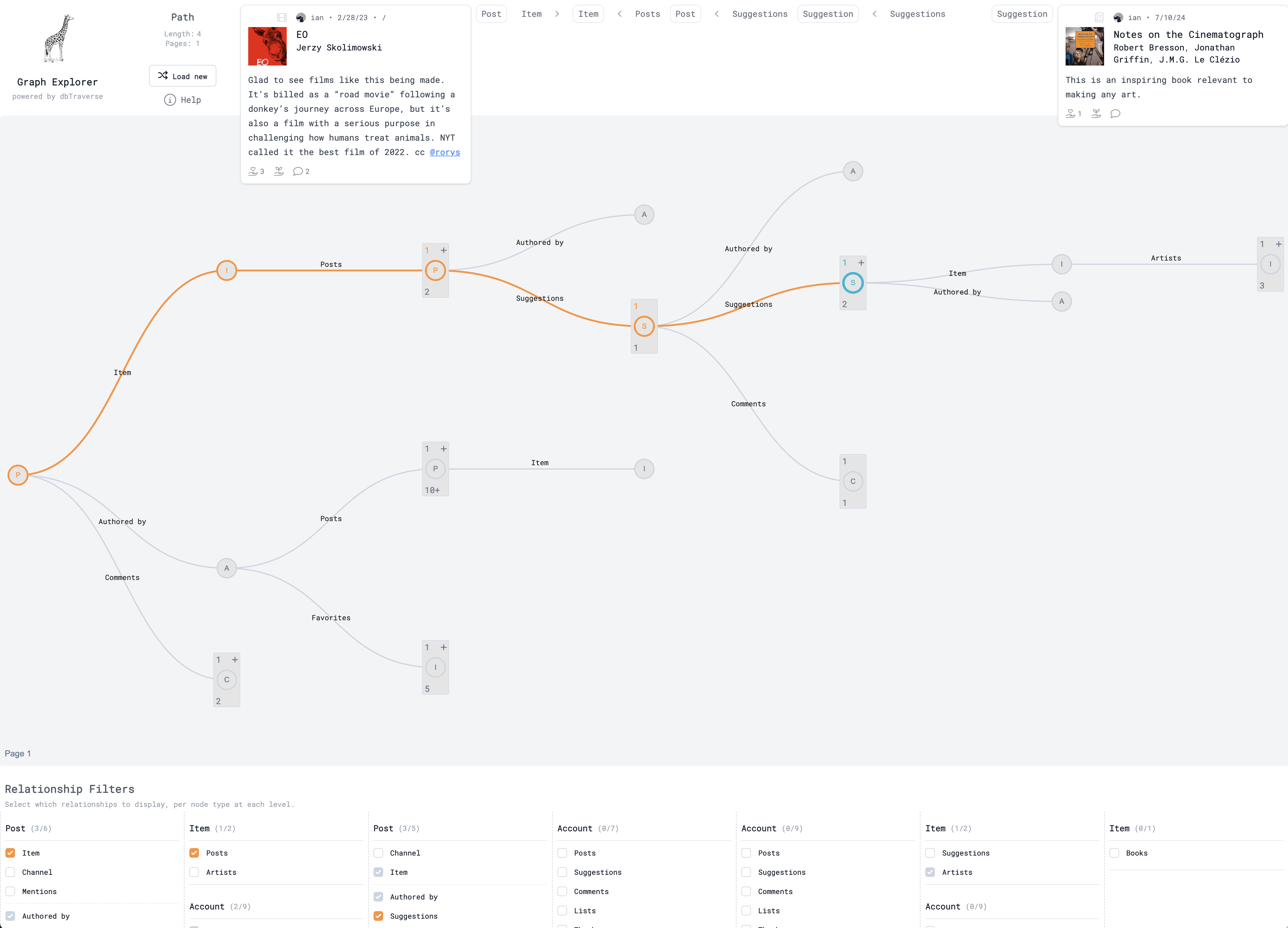A graphical explorer for your data
Traverse your database as a graph, with rows in your tables as nodes, and relations between them as edges.

See it in action.
dbTraverse provides an interactive visualization of the paths through your data.
dbTraverse powers Giraf's visualization of the Giraf knowledge graph.

Use dbTraverse with your data

Frequently asked questions
If you have a question not covered here, email us at info@dbtraverse.com and we'll get back to you with the answer.
What databases does dbTraverse support?
We're launching with support for PostgreSQL and MySQL. dbTraverse is designed to be agnostic about the underlying data source(s), so we'll add support for more databases over time.
Can I define custom node types besides the tables in my database?
Yes! You can define custom node types using the schema editor.
Can I define custom edge types besides the foreign key relations in my database?
Absolutely. Custom relationships between nodes can be defined in the schema editor using a SQL query.
How is dbTraverse deployed?
dbTraverse runs with Docker, so it can be run locally, in your private cloud, or in dbTraverse Cloud.
Is dbTraverse intended for internal or external use?
dbTraverse supports both use cases. You can configure user permissions and make dbTraverse available to users inside or outside your organization.
Is dbTraverse read-only, or does it support writing to the database?
By default, dbTraverse provides a read-only view of the database, but you can support writes by adding custom API routes and defining custom React components for your nodes.
Can dbTraverse query multiple databases at once?
Yes! Your dbTraverse graph can combine multiple data sources.